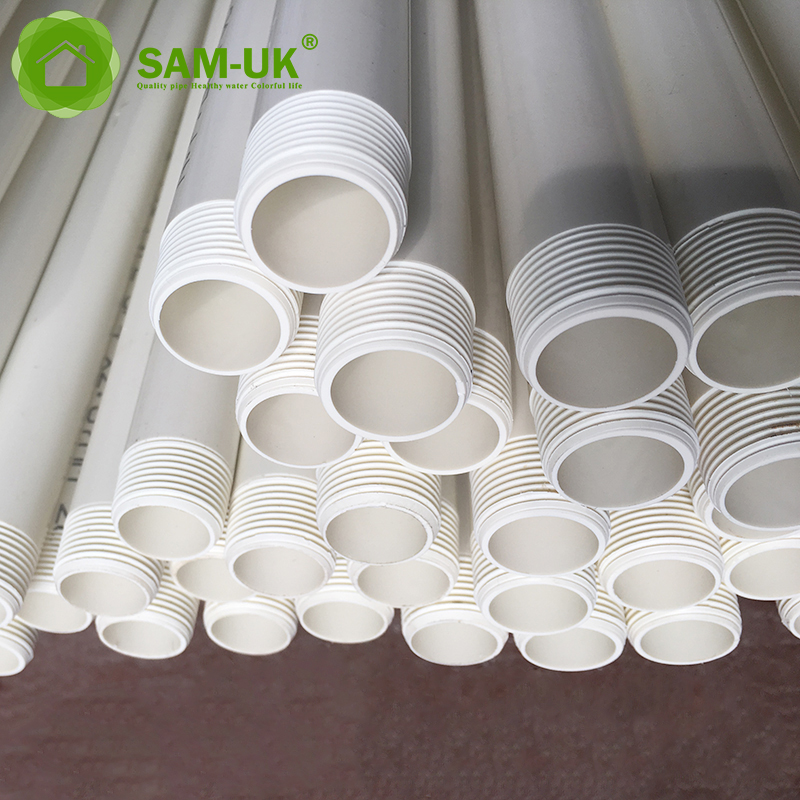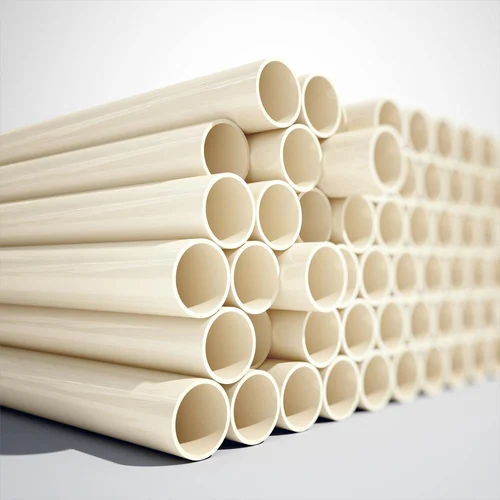Article Introduction
When choosing the plumbing system, picking the right type of pipes and fittings system is essential for ensuring the efficiency and safety of your system. For both residential and commercial plumbing, the two most common types of pipes used are UPVC pipe and CPVC pipe. Before deciding on a material to use for a project, it’s crucial to understand the distinctions between them.

ARTICLE CONTENT
- What is CPVC and UPVC
- Difference Between CPVC Pipes and UPVC Pipes
- Similarity Between CPVC Pipes and UPVC Pipes
- Drinking Water Safe
- Conclusion
- About SAM-UK
What is CPVC and UPVC
Before you could understand the difference between CPVC and UPVC know UPVC and CPVC full form. UPVC is Unplasticized Polyvinyl Chloride while CPVC is Chlorinated Polyvinyl Chloride.
CPVC is produced by chlorinating the PVC polymer. CPVC has 67% chlorine. Hence it is suitable for both hot & cold water application. Chlorination makes the CPVC material more strong/rigid, chemical resistant and gives them the ability to withstand high temperatures up to 93deg C.
CPVC pipes are bendable and exhibit fire-retardant properties, which means they can slow down or stop the spread of fire and are used in fire sprinkler systems. Apart from being resistant to chemicals, CPVC is resistant to many acids, alcohols, hydrocarbons, bases, etc.
On the other hand, UPVC and PVC are both the same. UPVC has 57% chlorine hence it is suitable for only below 60deg. C application or cold water application. UPVC pipes are long-lasting, recyclable, and are fire-resistant also.

Difference Between CPVC Pipes and UPVC Pipes
The primary difference between CPVC pipes and UPVC pipes lies in its resistance to temperatures. While CPVC can withstand upto 93 Deg C temperature which makes it suitable for both hot and cold water, UPVC can withstand only upto 60 Deg C and as such is suitable for cold water applications only.
1. Fire Retardance
UPVC LOI (limiting oxygen index) is 45. Hence it is self-extinguishing. Only chars due to fire.
CPVC has a better LOI than UPVC (i.e. 60) hence it is also self-extinguishing. This gives CPVC much better fire retardant properties and makes it ideal for use in fire-sprinkler application.
2. Installation
UPVC plumbing system is very easy to install using UPVC solvent cements. No special tools & hardly any skills required. Most plumbers are already aware.
CPVC plumbing system is as easy to install as UPVC. It required only CPVC solvent cements and also does not need any special tools & hardly any skills.
3. Joint Quality
UPVC joints are very good, strong & homogeneous. Joined with the help of UPVC or PVC Solvent cement and the process called Cold welding process. Since UPVC pipes and fittings are more rigid due to their dimensions, joining UPVC requires a little more care.
CPVC joints are also very good, strong & homogeneous. It is joined with the help of CPVC Solvent cement and the process called Cold welding process has over 50yrs history. When compared to UPVC, the design of CPVC based on the standard is such that the pipes are relatively more flexible making jointing easier and more fool proof than UPVC.

Similarity Between CPVC Pipes and UPVC Pipes
1. Special installation required
For UPVC no special installation required. Also available as a do-it-yourself kit.
For CPVC also no special installation required. This is also available as a do-it-yourself kit.
2. Effects Of Chlorine
Both CPVC and UPVC are unaffected by chlorine which is used to treat potable water in India.
3. Scale Formation/Calcination
No scaling in case of UPVC due to the highly smooth surface.
No scaling in case of CPVC due to the highly smooth surface.
4. Flow Rate
Both CPVC and UPVC have Hazen-Williams ’C’ factor of UPVC is 150. Hence Flow rate is very high. Good manufacturers ensure that they meet this requirement.
5. Effect Of UV
UPVC is UV stabilized.
CPVC has better UV stability. Hence temperature & pressure bearing capacity is unaffected.

Drinking Water Safe
UPVC: depending upon the manufacturer, UPVC may or may not be safe for drinking water.
Even though CPVC standard requires that only non-toxic raw materials be used, again it depends upon the manufacturer whether he manufactures products that are safe for drinking water. NSFcertified CPVC pipes and fittings must be preferred.
1. Repairability
Both UPVC and CPVC are very easy to repair and doesn’t require any special equipment.
2. Resistance To Checmical
UPVC is high resistance to acid and alkalis.
CPVC also has very high resistance to acid and alkalis. Due to its exceptional chemical resistance properties CPVC is also preferred as material for piping for industrial applications.
3. System Simplicity
UPVC is suitable for below 60degree C application.
CPVC is suitable for both hot & cold water applications and also for chemical transmission. It can resist up to 93degree C temperature.
Conclusion
PVC and UPVC are both types of plastic used in plumbing. PVC is a more flexible and affordable option, but not suitable for hot water systems. UPVC, on the other hand, is more rigid, and durable, making it a popular choice for outdoor applications.
About SAM-UK
SAM-UK are a professional 18+ years manufacturer in producing vinyl building profile products and PVC,CPVC, PPH,PPR,PP pipes and pipe fittings, valves, taps and so on. We own the certificates of SGS\SONCAP\ISO9001\CE\NSF,support color /size customization. Welcome to consult for Catalog and Product. you can contact us at email sales@sam-uk.com





